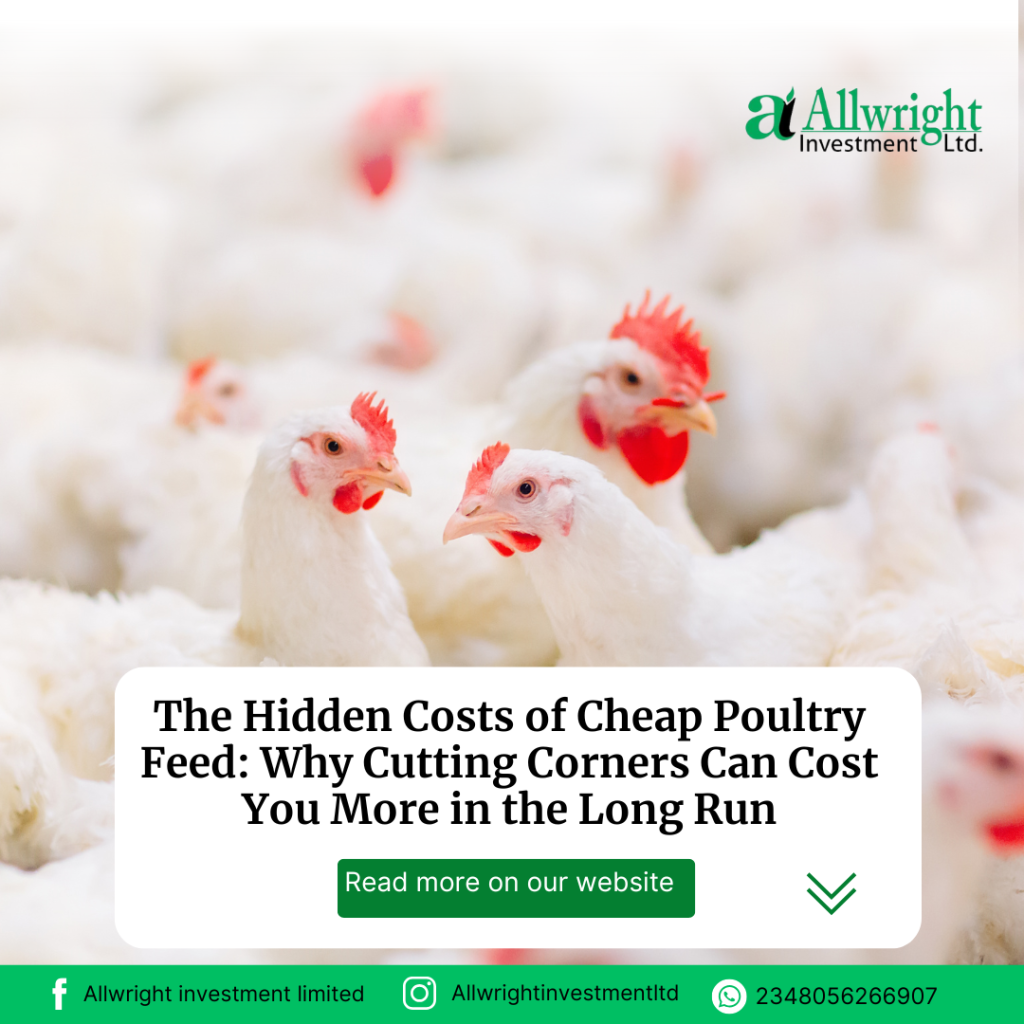
Why Cutting Corners Can Cost You More in the Long Run
Poultry farmers often face tight profit margins, leading many to opt for the cheapest feed available. While this may seem like a smart cost-saving move upfront, low-quality feed can actually increase expenses through poor growth rates, higher mortality, and reduced egg production.
In this eye-opening post, we’ll break down:
The True Price of Low-Quality Feed
1️⃣ Slower Growth = Longer Time to Market
- Cheap feeds often lack proper protein/amino acid balance
- Results in 10-15% slower weight gain for broilers
2️⃣ Weakened Immunity = More Disease & Deaths
- Inadequate vitamins/minerals compromise immune systems
- Can lead to 5-20% higher mortality rates
3️⃣ Poor Egg Production
- Layer hens on inferior feed produce fewer eggs with weaker shells
- Egg production can drop by 15-30%
4️⃣ Hidden Veterinary Costs
- Nutrient deficiencies lead to more health issues
- Common problems: leg weakness, fatty liver disease, egg binding
How to Evaluate Feed Quality
✔ Check protein sources (soy vs. filler ingredients)
✔ Verify vitamin/mineral premix inclusion
✔ Look for mycotoxin test results
✔ Consider feed conversion ratios
Smart Alternatives That Won’t Break the Bank
- Strategic supplement mixing
- Getting supplements from Allwright Investment ltd
- On-farm feed testing
The Profit Math: Cheap vs. Quality Feed
We’ll provide a real-world cost comparison showing how spending 10% more on premium feed can actually boost profits by 20-35% through better performance.
Bottom Line: That “bargain” feed may be your farm’s most expensive mistake. Learn how to make smarter feeding choices that truly save money while maximizing flock health and productivity.
Have you ever tracked how much poor feed actually cost you in lost productivity? Share your experiences below!

Leave a comment
You must be logged in to post a comment.